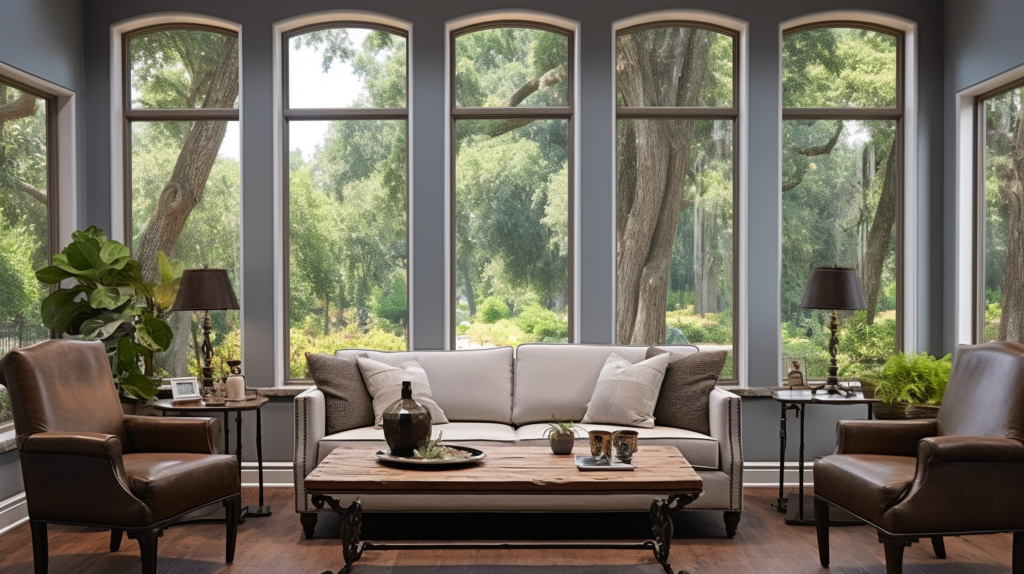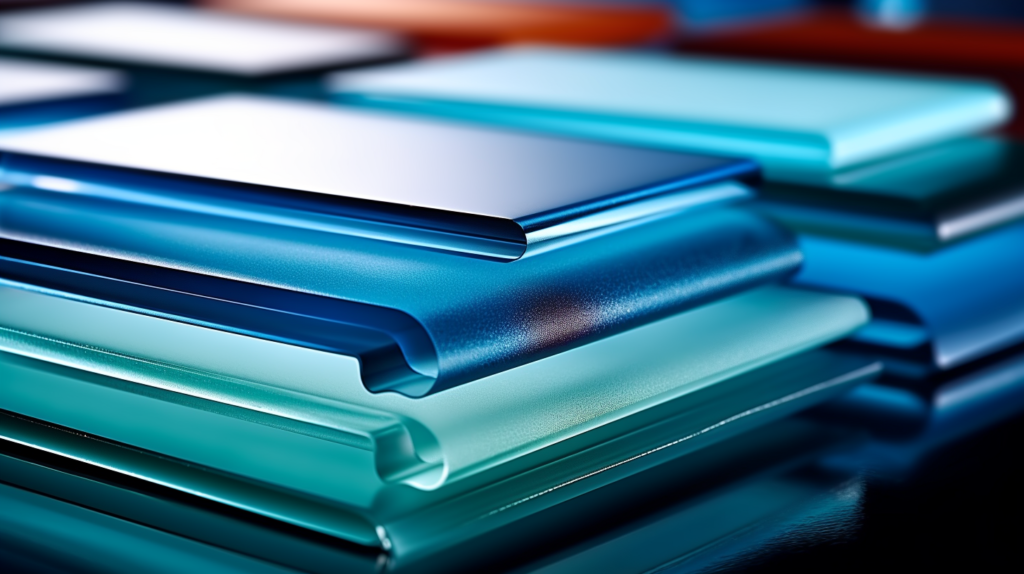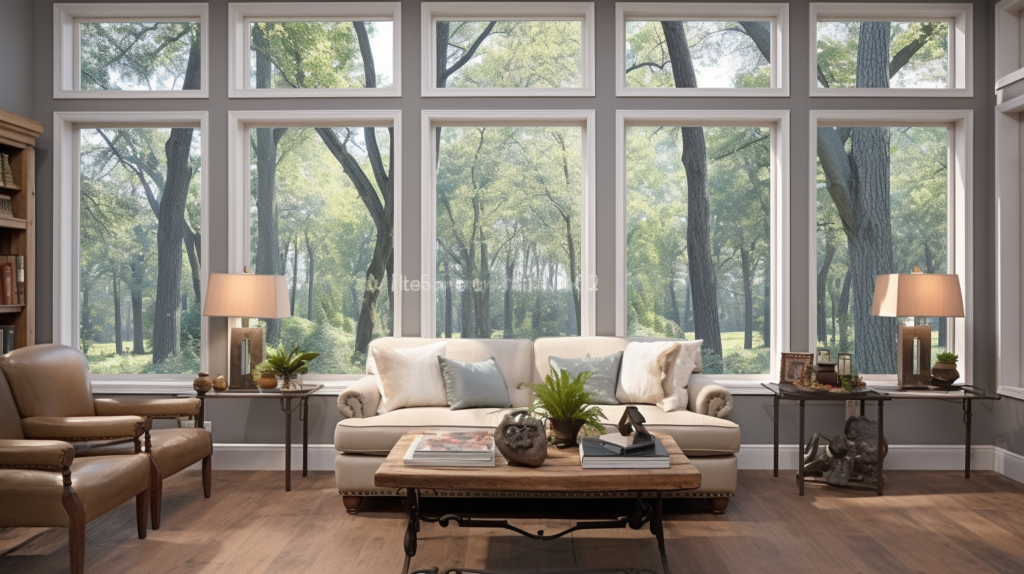You need to change your windows and wonder if impact windows can offer a silent oasis in addition to storm protection. It’s a valid query in an age where home comfort goes hand-in-hand with resilience.
In this article, we’ll cut through the noise to focus on the soundproofing capabilities of impact windows, designed for both security and serenity.
Let’s dive in and discover if these windows are as quiet as they are strong.
What Are Impact Windows?

Impact windows, commonly referred to as hurricane windows, are engineered for extreme durability to withstand the intense forces of nature.
Designed to resist the high winds and projectile debris associated with hurricanes, these windows provide an essential barrier that can prevent significant damage to homes and buildings.
They differ significantly from standard windows, which are generally not equipped to handle such forces.
Standard windows are often the first point of failure during a storm, allowing the elements to penetrate a home’s defenses, which can lead to catastrophic structural damage due to pressure changes and water ingress.
Beyond their protective capabilities, impact windows also serve to enhance the energy efficiency of a building.
They are typically made with low-emissivity (low-E) coatings and argon gas fillings, which work together to minimize heat transfer.
This not only helps to keep a building cooler in the hot summer months but also reduces the strain on air conditioning systems, leading to lower energy costs.
These energy-saving attributes are an added benefit for homeowners who are looking to both protect their property from storms and make their homes more energy-efficient.
What Are Impact Windows Made Of?

The composition of impact windows is a study in the balance between strength and functionality.
At the core of these windows is the interlayer made of Polyvinyl Butyral (PVB), which serves as a clear, adhesive and strong bonding material between two panes of glass.
This interlayer is critical in the event of an impact; even if the outer pane is cracked or shattered, the PVB layer holds the broken pieces in place, effectively preventing sharp glass shards from becoming dangerous projectiles and maintaining the window’s structural integrity.
This PVB interlayer is not only beneficial for its impact resistance. It also provides substantial sound reduction, owing to its ability to dampen and absorb sound waves.
The interlayer’s thickness contributes to its effectiveness—the thicker the PVB, the more sound it can absorb.
Additionally, the glass used in impact windows is typically tempered, which means it has been heat-treated to increase its strength by up to four times that of regular annealed glass.
This process involves heating the glass to a high temperature and then rapidly cooling it, which changes the way the glass breaks, causing it to crumble into small granular chunks instead of jagged shards when impacted.
Are Impact Windows Soundproof?

Yes, mpact Windows Are Soundproof. The soundproofing capabilities of impact windows are a natural byproduct of their sturdy construction.
Impact Windows are made with PVB which are the same as soundproofing glass and soundproofing glass does soundproof.
They are designed primarily to protect against high-impact forces, but this same design also imparts significant sound-dampening properties.
The combination of multiple glass panes and the PVB interlayer creates a barrier that is difficult for sound waves to penetrate.
The mass provided by the glass and the elasticity of the PVB combine to reduce the vibration of sound waves through the window, thus dampening noise from the outside.
It is crucial to understand, though, that soundproofing is relative and depends on the frequency and intensity of the noise.
Lower frequency sounds, such as the rumble of thunder or the drone of an airplane, are inherently more challenging to block out due to their longer wavelengths.
In contrast, higher frequency sounds, like the chirping of birds or the ring of a telephone, are more easily dampened.
Impact windows, with their specialized construction, offer a level of soundproofing that can significantly reduce the intrusion of external noise, contributing to a more peaceful indoor environment.
How Soundproof Are Impact Windows?

Assessing the soundproofing effectiveness of impact windows involves understanding the Sound Transmission Class (STC) rating—a numerical system used to rate how well a window can attenuate airborne sound.
Windows with a higher STC rating are better at reducing noise, and impact windows, due to their construction, generally offer higher STC rating than traditional single-pane windows.
The actual rating can vary, though, based on several factors, including the thickness of the glass, the type of PVB used, and the overall design and construction of the window unit.
To put this into perspective, a standard single-pane window typically has an STC rating of around 18 to 20, while a double-pane window may rate around 25 to 27.
Impact windows, on the other hand, can have STC ratings ranging from the mid-30s to 40s, providing a noticeable reduction in noise levels.
This makes them a suitable option not only for homes in hurricane-prone areas but also for those in noisy urban environments, where reducing sound transmission can significantly improve the quality of life.
What Affects Impact Windows To Not Be Soundproofed?

The quest for a soundproof living space is often met with challenges, and even impact windows can fall short if certain factors are not addressed.
The installation process is paramount; if a window is not installed correctly, the best materials and construction can be undermined.
Gaps left around the frame during installation will allow sound to travel through, significantly diminishing the window’s soundproofing capabilities.
The structural design of the window frame is also a crucial factor. A frame that is not properly designed or constructed to complement the soundproofing features of the glass and PVB interlayer will not perform optimally.
In addition, environmental factors such as temperature changes and humidity can affect the materials of the window over time, potentially creating gaps or weakening seals that can let in noise.
Regular maintenance and inspections can help to ensure that the window’s soundproofing features remain effective over time.
How To Improve Soundproofing Of Impact Windows

Maximizing the soundproofing benefits of impact windows often requires additional measures to be taken during and after installation.
Ensuring a tight seal with quality weatherstripping is crucial for preventing sound waves from entering through gaps.
Acoustic caulk is specifically designed to address any cracks or openings, forming a dense, flexible seal that can adapt to the subtle movements of a building and maintain an effective barrier against noise.
For environments where noise levels are particularly high, window inserts can provide an additional layer of sound insulation.
These are secondary windows installed on the interior side of an existing window, creating an air gap between the insert and the window which further reduces sound transmission.
This solution is often used in recording studios and other settings where sound reduction is paramount, and it can be an effective option for residential properties that require a higher level of noise control.
Alternative To Impact Windows For Soundproofing

In situations where soundproofing is the primary concern rather than impact resistance, homeowners may consider alternatives to impact windows.
Double or triple-pane windows, for instance, offer superior sound insulation due to their multiple layers of glass and the air or gas space between them.
These windows can be filled with inert gases like argon or krypton, which are denser than air and provide an additional buffer against noise.
Should You Change To Impact Windows For Soundproofing?

No, you should not change to Impact windows just for soundproofing. If soundproofing is the sole concern, there may be more cost-effective and targeted solutions available.
Window inserts, for example, are a less invasive and more affordable option for improving the soundproofing of existing windows.
Before making a decision, homeowners should evaluate their specific needs. If living in an area prone to hurricanes, the dual benefits of impact windows may provide the most value.
However, for those in quieter climates where extreme weather is not a concern, the additional cost of impact windows may not be justified if soundproofing is the only goal.
A thorough assessment of the individual situation will help in making the most informed and beneficial choice for a home’s window needs.
Conclusion
Impact windows serve as a formidable shield against storms while also providing sound reduction, making them a dual-purpose investment for homeowners.
Their construction with PVB interlayers and tempered glass offers both safety and a quieter indoor environment, although they’re not solely designed for soundproofing.
For those living in hurricane zones, impact windows are a wise choice, offering protection that goes beyond noise control.
In less storm-prone areas, alternatives may offer better value for soundproofing needs. Deciding on impact windows should be based on location, lifestyle, and the level of exterior noise, ensuring that the choice aligns with the homeowner’s priorities for safety and comfort.
FAQs About Impact Windows
What Is The Best Material For Impact Windows?
The best material for impact windows is one that balances transparency, strength, and flexibility.
Laminated glass, often featuring a PVB interlayer, is widely regarded as the optimal choice.
It provides the necessary toughness to withstand high-speed debris and the flexibility to absorb impact without compromising the window’s integrity.
